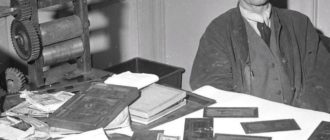
Synthetism (from the French synthétiser – to embrace, to unite) is a trend in painting that arose during the development of symbolism (understatement and hints in paintings) and cloisonnism (the use of clear lines to distinguish between image elements). Synthetism became famous thanks to the work of Paul Gauguin, Émile Bernard and other artists.
As the name of the style was not chosen by chance, symbols and mystery coexisted in it with wide contour lines. At the same time, he was opposed to such a style as pointillism, and he began to develop in the opposite direction from it.

The main characteristics and features of synthetism
Synthetism in painting arose and began to change as an integral part or an offshoot of the Impressionist and Post-Impressionist styles. He partially adopted their features – in particular, such as the image of all objects in the picture in the most general form, without detailed drawing and excessive accuracy.
Synthetic artists had the following features:
- placing at the forefront of the natural, natural principle;
- denial of human achievements in the field of science and technology;
- great interest shown in the inner world of each person;
- simplification of images as much as possible;
- craving for the use of bright, as if sparkling, colors;
- the desire to convey deep emotions and feelings experienced when observing certain scenes (objects);
- active use of memories, mostly nostalgic;
- attempts to combine ideas about color and rhythm with the beauty of the surrounding nature.

Adherents of synthetism combined in their paintings the appearance of objects and the emotions that a person experiences when contemplating them. In addition, the artists tried to preserve the aesthetics, the attractiveness of colors and lines – and they succeeded.

History
It is generally accepted that the new style was born in 1888. For the first time, its features clearly appeared in the paintings of such recognized authors as Paul Gauguin, Louis Anquetin, Emile Bernard and some other masters belonging to the school of the French commune of Pont-Aven.
In 1889, the Volpini restaurant in Paris hosted an exhibition of works by Paul Gauguin and other masters of the Pont-Aven group. During its implementation, the term “synthetism” was used for the first time as the name of a new style. Over the years, such masters as Paul Serusier, Henri Moret, Jan Verkade, Claude Émile Schuffenecker, Armand Séguin and others. In their works, “synthetic” features were manifested to a greater or lesser extent.

The most famous synthetic artists
During the heyday of synthetism, the world recognized many names of painters who worked in this style, often choosing it as the next stage in their development. The most famous of them are:
- Paul Gauguin (1848-1903). One of his “synthetic” paintings – “Vision after the Sermon” (1888) – shows the appearance of God to Jacob in the form of an angel.
- Paul Sérusier (1864-1927). His painting Talisman (1888) is considered one of the finest examples of semi-abstract landscape painting.
- Louis Anquetin (1861-1932). Became famous for his painting “Woman Reading” (1890), created by the artist during the painful search for himself in art.
- Charles Laval (1862-1894). After meeting Paul Gauguin, he went with him to Panama, seeking to retire from civilization in search of an idyll. Friends moved to the island of Martinique, where Laval was crippled by a serious illness. Here he painted several paintings – in particular, such as “Landscapes of the Mariniki” (1887).









